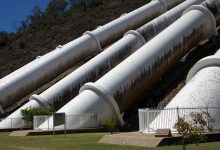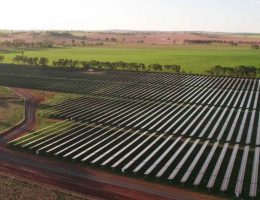Federal energy minister Angus Taylor has said he expects the first six projects under the Underwriting New Generation Investments (UNGI) program will be approved before the end of the year, giving the green light for what is expected to be a mix of new gas and pumped hydro energy storage projects.
In March, Taylor announced that the government had shortlisted 12 projects for its UNGI program, that would seek to underpin investments in new dispatchable generation infrastructure, a process that he said then was urgent and needed to be completed before the May election.
Taylor ran out of time, and little has been heard of since. But, speaking with Nine newspapers, Taylor said he expected the government would be in a position to make a final decision on as many as six of the UNGI shortlisted projects before the end of the year.
The shortlist consists of five gas-fired power stations, six pumped hydro projects and an expansion to the Vales Point coal-fired power station proposed by Delta Electricity. The government has already committed to providing support for the ‘Battery of the Nation’ expansion of Tasmanian pumped-hydro capacity.
It is likely that only a single pumped hydro project from South Australia would win support, otherwise it would be a crowded market, which means that at least half of the first round of approved UNGI projects being fuelled by either gas or coal.
Taylor has drawn upon the Clean Energy Finance Corporation (CEFC) and the Australian Renewable Energy Agency (ARENA) to provide advice on the 12 shortlisted projects.
Both the CEFC and ARENA have previous involvement in pumped-hydro energy storage projects, with both agencies providing financial support to the Kidston pumped-hydro energy storage project, which will utilise disused mine pits to create an energy storage system. The project has subsequently been paired with a large-scale solar project, to provide a zero-emissions source of electricity for energy storage.
It is understood that neither the CEFC nor ARENA will be asked to assess approvals involving coal generation, but despite the “technology-neutral” approach of the UNGI program, wind and solar projects are likely to be excluded for not being sources of “firm” supply. It is also unlikely that the greenhouse gas emissions impact of a proposal is likely to be factored into a decision to provide support.
This opens the door to the Morrison Government using the UNGI program to provide funding for the expansion or extending the life of ageing coal-fired generators, like the Vales Point power station already shortlisted in the first round of funding.
Under the UNGI program, the government will use taxpayer funds to financially underwrite view projects using any fuel source, by providing the project with a financial loan, grant funding, or derivatives contracts to provide the project with a revenue guarantee.
Numerous parties, including the Grattan Institute and others, have said the government’s heavy-handed intervention would likely dissuade other private investments.
The Australian Greens have previously proposed legislation that would prohibit the federal government from putting taxpayer funds into any coal projects as part of the UNGI program, such as Vales Point, and said that the party would continue to oppose the UNGI being used to prop-up coal projects.
“By propping up coal the government is also driving up prices, as it will contribute to the stall in investment in new clean generation. The Greens will move to amend the big stick energy bill currently before the Parliament to prevent the underwriting of coal fired power stations,” Greens MP Adam Bandt said.
“Vales Point is due to be closed by 2028, yet its owner and Liberal Party donor wants to keep it limping along for another two decades, harming our climate and the health of the local community.”
The Morrison Government says that the UNGI scheme is a response to a recommendation of the ACCC’s Retail Electricity Pricing Inquiry that the government underwrite investments in projects that seek to serve multiple commercial and industrial customers.
It remains unclear whether the involvement of any commercial and industrial customers remains an essential criterion of the UNGI program, as per the ACCC’s recommendations, but it appears that requirement may have been dispensed.
The Morrison Government believes it can achieve a 25 to 30 per cent reduction in wholesale electricity prices under the UNGI program by the end of 2021.
The index of wholesale electricity futures contracts produced by the Australian Stock Exchange has shown that wholesale electricity prices have risen steadily since Scott Morrison became Prime Minister in 2018.
The reasons behind the surging wholesale electricity prices include the rising cost of gas, and pressures on drought affected hydro generators, as a stable policy environment that still sees the federal government without a solid policy on energy and emissions.
Wholesale electricity prices contribute around 40 per cent of the end retail electricity price paid by energy users.

The Government expects the UNGI program to operate across multiple “phases” over the four years to June 2023.
Minister Taylor’s office and the Clean Energy Finance Corporation have been contacted for additional comment.










